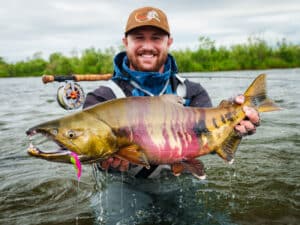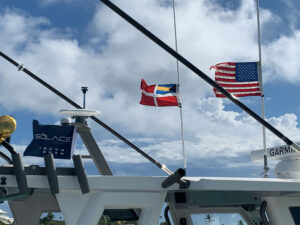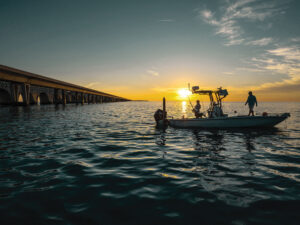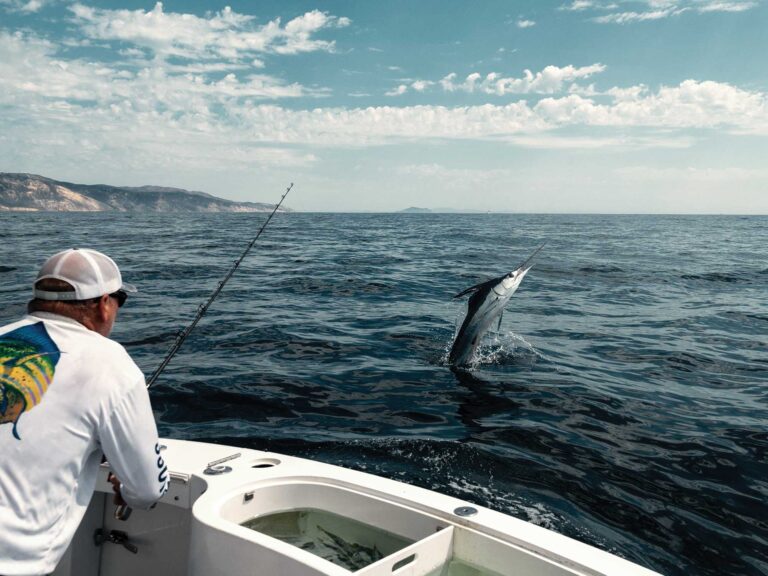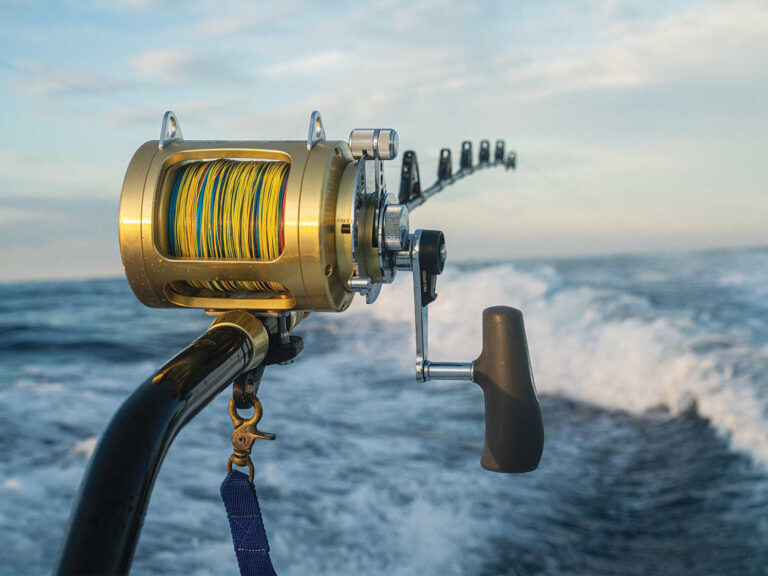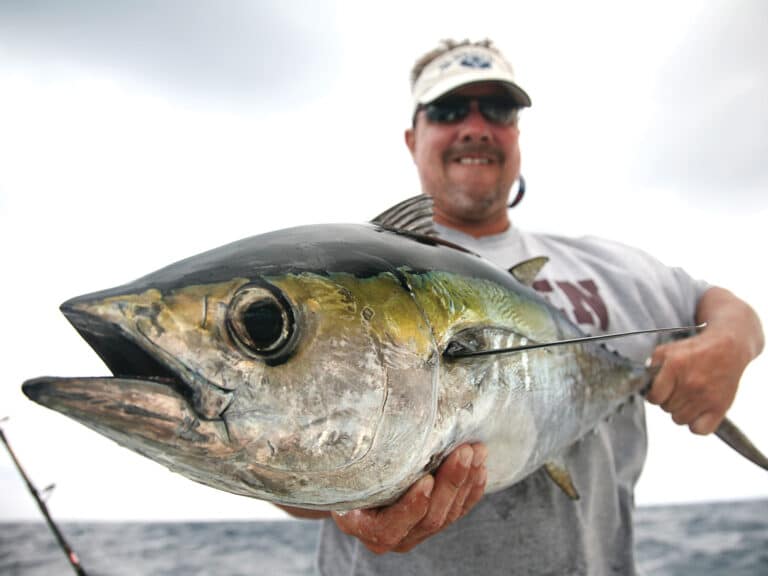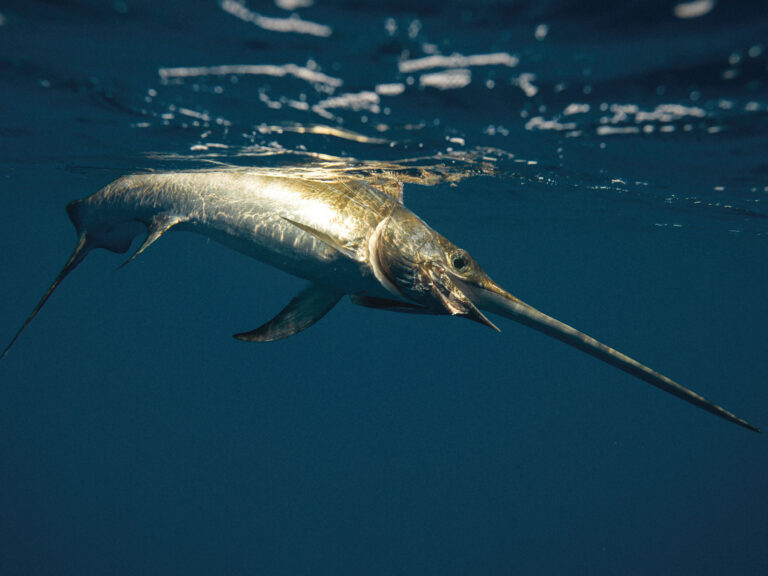
10tech
One of the great things about this job is that you get to experience a variety of different types of fishing. As a guide in the Florida Keys, most of my bonefish and permit fishing was done from a skiff – essentially a 17-foot tackle box.
Back then, wading might have consisted of staking the boat out and plodding 100 yards to tailing fish on an afternoon off. The most critical tools then were a handful of flies, a cold beer and some SPF-70 sunscreen. If you needed to rig another tippet or weren’t happy with the few flies you had in your pocket, no problem ? wade back to the boat and change it up.
Now, having the chance to visit Honduras, the Bahamas and some other premiere destinations, the rules have changed. Chances are, you could spend most of your day a good distance from the boat. The traditional kit bag isn’t really up to the task, and the flip flops that have been relegated to wading duty aren’t necessarily heavy-duty enough for an eight-hour romp across cap rock, turtle grass and sea urchins.
So here are a few suggestions for the next time you get ready to head to the tropics. They just might help you when targeting redfish, stripers or a host of other species closer to home, as well.
Footwear
Believe it or not, what you have on your feet can make or break the flats wading experience. For years, I preferred wearing neoprene dive-style booties, the kind with hard rubber soles. While they’re adequate for a few hours of casual wading, spend 10 hours on your feet and you’ll find all sorts of nasty, sharp things in the flats. You’ll also want good orthopedic support for your feet. Your back will thank you.
That’s exactly the situation I found myself in recently while getting ready to leave for a trip to Roatan. I stopped by my local fly shop, Orlando Outfitters, to pick up a pair of booties. While discussing the trip with owner Tim Bettis, he finally convinced me to break down and spend the money on a pair of Patagonia Marl Walkers. Talk about money well spent! After days of hiking through sharp coral and softer marl bottoms, my feet felt as good when we hit the dock as they did first thing in the morning. In fact, you don’t really need to think about where you step next because they offer traction, are secured to your feet and offer tremendous ankle support.
Waist Pack
I resisted the movement toward getting a fanny pack. I always carried what I needed in my kit bag and tried to travel the flats light, with a spool of extra tippet material and flies in my pocket. After years of things getting tangled or piercing my flesh through the shirt fabric, I finally broke down and couldn’t believe the difference.
My current favorite is the Crooked Island Pack manufactured by Fish Pond. Regardless of what manufacturer you go with, there are a couple of things to look for.
First, you want to have easy access to your flies, tippet materials, clippers and tools. This means you should be able flip the pack easily around from back to front. It also means you should have ample room for a fly box or two, as well as a foam pad for storing and drying previously used flies.
One of my biggest requirements nowadays is the inclusion of a Nalgene water bottle, or at least room to store one in the pack. The tropical marine flats environment is a tough one, and the last thing you want is to get dehydrated a good distance away from the boat and the cooler. Having room for – and easy access to – a water bottle goes a long way towards preventing a meltdown.
Another small but important detail is that the tag ends of the pack’s belt have a way to be stowed out of the way of errant fly lines. Nothing is more frustrating than shooting a long cast only to have it foul on a loose piece of nylon webbing.
Flies
Although it’s true you can never have enough flies, recently I’ve started paring down my arsenal. I’ll always have a good selection of Gotcha’s, Crazy Charlies, Bonefish Bitters and crab patterns. But I try to have them tied in varying colors and weights and with or without weed guards, allowing me to adapt to almost any situation.
The crustaceans and small finfish that make up the diet of bonefish and permit worldwide generally match their surroundings – they are lighter in color over light bottom and darker over dark bottom. Having a variety of size ranges (from 1/0 for crab patterns down to No. 8 for bonefish) in a broad range of colors (from standard light-, medium- and dark-browns along with a few pink and even cream-colored patterns mixed in) allows you to match the hatch in almost any situation.
One piece of advice I picked up recently on a trip to Honduras: Pick a selection of flies that you think are the right size, and then pack several sizes smaller as well. When the wind dies, and skittish fish are in extremely skinny water, lengthening the leader and dropping down a size or two on the fly can make a huge difference.

